Cambodia has some of the best places to visit in Southeast Asia — but honestly, also a few duds. While travel is subjective, let me share my impressions in this honest guide.
I’ve explored Cambodia a fair bit and consider it one of the more ‘contrasty’ countries in the region. As overwhelmingly positive as the laidback islands and impressive Khmer temples are, I found myself, umm, whelming in a quite different direction in places like Sihanoukville (a sordid seaside casino resort that I couldn’t wait to leave).
The truth is that Cambodia is always changing and some places that were once great have since faded, as I noticed when visiting the same places several years apart. In this updated Cambodia travel guide, let me share with you my thoughts to help you get the most out of your trip — besides, of course, visiting the epic temples of Angkor Wat, which is on just about everyone’s bucket list!
I’ll talk about two ways to visit Cambodia:
- As a side-trip from Vietnam, Laos, or Thailand. It’s fairly common for tourists to hit up Cambodia for a few days as an extension to a holiday in a neighboring country. If that’s you, read on for some tips on making the best of your limited time.
- Backpacking Cambodia for several weeks. If you have more time then you can invest in exploring Cambodia in much more detail. If you’re on a Southeast Asia trip and not in a rush, you’ll find many fascinating places in Cambodia, including authentic travel, ecotourism, and unspoiled islands.
Let’s jump in!
Creating your Cambodia itinerary
First, let’s get the lay of the land.
The good news is that Cambodia is relatively small and compact, so you can zip between many key places fairly easily. However, travel times between some destinations can still be considerable due to the road network.
Considering the potato-like shape of Cambodia, you’d think it would be perfect for a circular route. Sadly, its road layout doesn’t quite cooperate with such a plan, so a bit of backtracking might be needed if you want to explore different parts of the country.
The main transport arteries are between Phnom Penh and Siem Reap (running along the north and south side of the Tonle lake). Other main roads mostly shoot off in different directions from the capital. This means that if you want to travel all over Cambodia, you might have to come back through Phnom Penh once or twice. (E.g. I couldn’t go from Kratie direct to Siem Reap, so I had to go via the capital. From Siem Reap to Kampot also goes via Phnom Penh.)
The map below marks some of the key travel destinations for Cambodia.
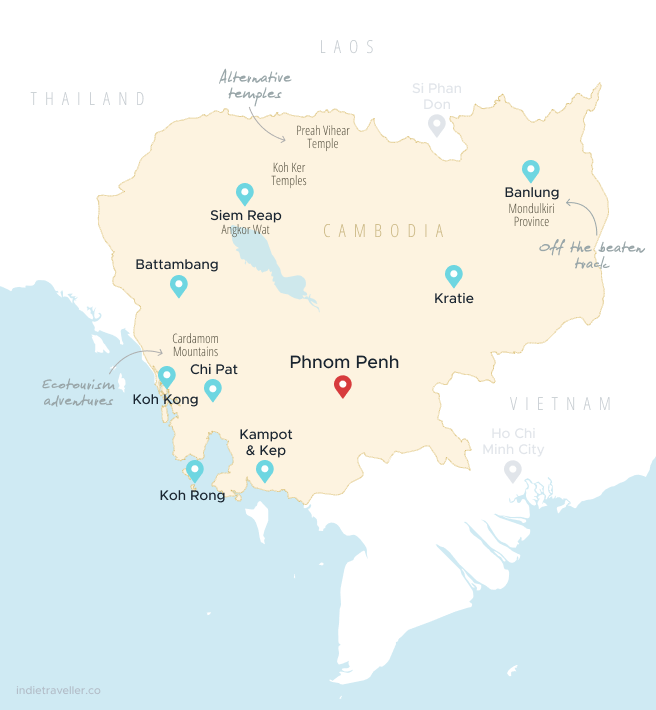
The central parts of Cambodia are very flat — it’s mostly massive plains without much to grab your visual interest along the way, besides the Mekong river at least. I like the southwestern part a lot as it has more mountains and it’s also where you’ll find Cambodia’s wonderful islands.
3 Days in Cambodia: For a quick visit, I suggest going to Siem Reap to see the temples of Angkor. Should you be considering Cambodia as an add-on trip then you can find direct transportation from many places in the region, including Ho Chi Minh City and Bangkok.
The quickest way to visit Siem Reap is to fly. A new airport (code: VDSA) opened in 2023, replacing the previous Siem Reap international airport. There are direct flights from Saigon, Hanoi, Da Nang, Bangkok, Phuket, Luang Prabang, and Singapore, making it easy to add Cambodia to another trip.
Otherwise, travel overland by coach bus. There are direct lines from many major cities.
From Bangkok, Thailand:
- The bus from Bangkok to Siem Reap (the city near Angkor Wat) takes about 8 hours
- You can also fly with a local budget carrier such as AirAsia. A direct flight takes about 70 minutes.
From Ho Chi Minh City, Vietnam:
- The bus from Ho Chi Minh City to Siem Reap (the city near Angkor Wat) takes about 13 hours
- You can also fly with a local budget carrier such as AirAsia. A direct flight takes about 80 minutes.
Since the journey from Vietnam is quite long, you could break up the journey in Phnom Penh. The bus from Ho Chi Minh City to Phnom Penh takes about 6 hours.
1 Week in Cambodia: I recommend spending just one day in Phnom Penh. It’s honestly not the most exciting Asian capital, but the genocide memorials are very revealing about Cambodia’s history and are must-visits. Add 3 days in Siem Reap for Angkor Wat and some other side-trips. Then go either 3 days in Kampot & Kep for a chill riverside location, or hit up the Cambodian islands for 3 days. (I like the more back-to-basics vibes on Koh Rong Sanloem and Koh Ta Tiev.)
2 Weeks or more in Cambodia: You’ll have lots of time to explore Cambodia in depth! Consider all the locations mentioned under 1 week and add in a few bonus destinations. I loved the ecotourism project in Chi Pat — it’s a great place for a jungle adventure. Battambang is a calm city that’s often considered a hidden gem; be sure to check our Battambang travel guide for specific activity ideas. If you’re on a bigger trip and coming from southern Laos, you may wish to add a stopover in Kratie, a calm and charming town along the Mekong with only small-scale tourism.
Since most visitors will want to include Angkor Wat in their itinerary, let’s tackle this topic first.
How to visit Angkor Wat
The UNESCO World Heritage site of Angkor Wat is the biggest sight in Cambodia — and one of the biggest in all of Asia.
It’s clearly what brings most people to Cambodia.
Since 3D aerial laser scans were carried out in 2016, the archaeological site is understood to have not just been the world’s largest religious monument but also a huge ancient city at the heart of the Khmer Kingdom. It’s thought that 300,000 workers and 6,000 elephants were involved in its construction.
Angkor Wat is massive. The main temple that appears in most photos is just a tiny part of the 400-square-kilometer site.
To visit Angkor Wat, you should go the nearby city of Siem Reap. I recommend reading our detailed guide to Siem Reap, as it’s a fun city with lots to do besides the temples. But let me quickly explain how you can best experience the temple complex here.
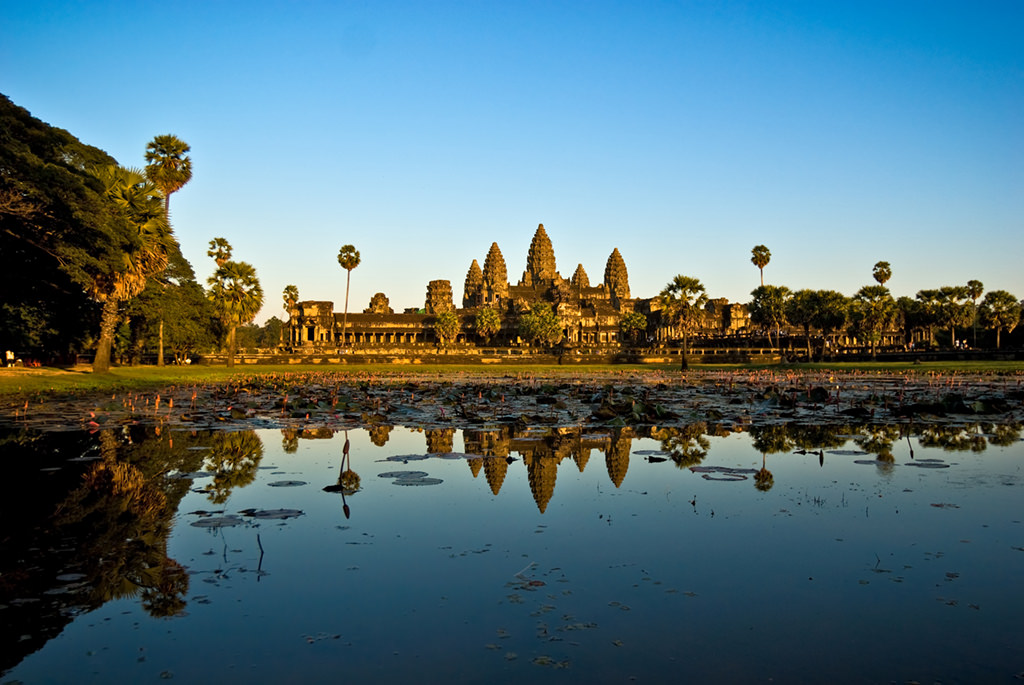
Tip 1: visit the temples at sunrise
The best way to experience Angkor Wat is at sunrise. Yeah, it sucks having to wake up at like 6 a.m., but it’s worth it!
Those dedicated enough for an early rise will gather at the main temple to see the sun emerge from behind its spires.
You can expect a bit of a crowd at this prime sunset-watching location, but you’ll still be here hours before the tour buses start arriving. This means you can then wander the temples in relative peace and avoid the intense midday heat. The early morning light also gives the ruins a wonderful glow.
Most people go to see the sunrise at the main temple, but there are many other sunset-watching locations inside the park that can give you a more serene experience.
I recommend booking this sunrise tour that will pick you up in Siem Reap. You’ll also have a professional local English-speaking guide who will tell you everything about the temple ruins. I’ve been to Angkor Wat in mid-afternoon where I had to battle my way through a sea of selfie sticks, but I’ve also visited for sunrise when the site truly kept its mystique. Going for sunrise will definitely elevate your experience!
book sunrise tourTip 2: explore the outer temples
My second piece of advice is not just to be laser-focused on the main temple that you see in all the photos, but to explore other smaller ruins as well.
Thanks to its huge size, there are many areas of Angkor to check out. The main temples get crowded but there are numerous ruins that are very peaceful (and often wonderfully overgrown by big-rooted trees).
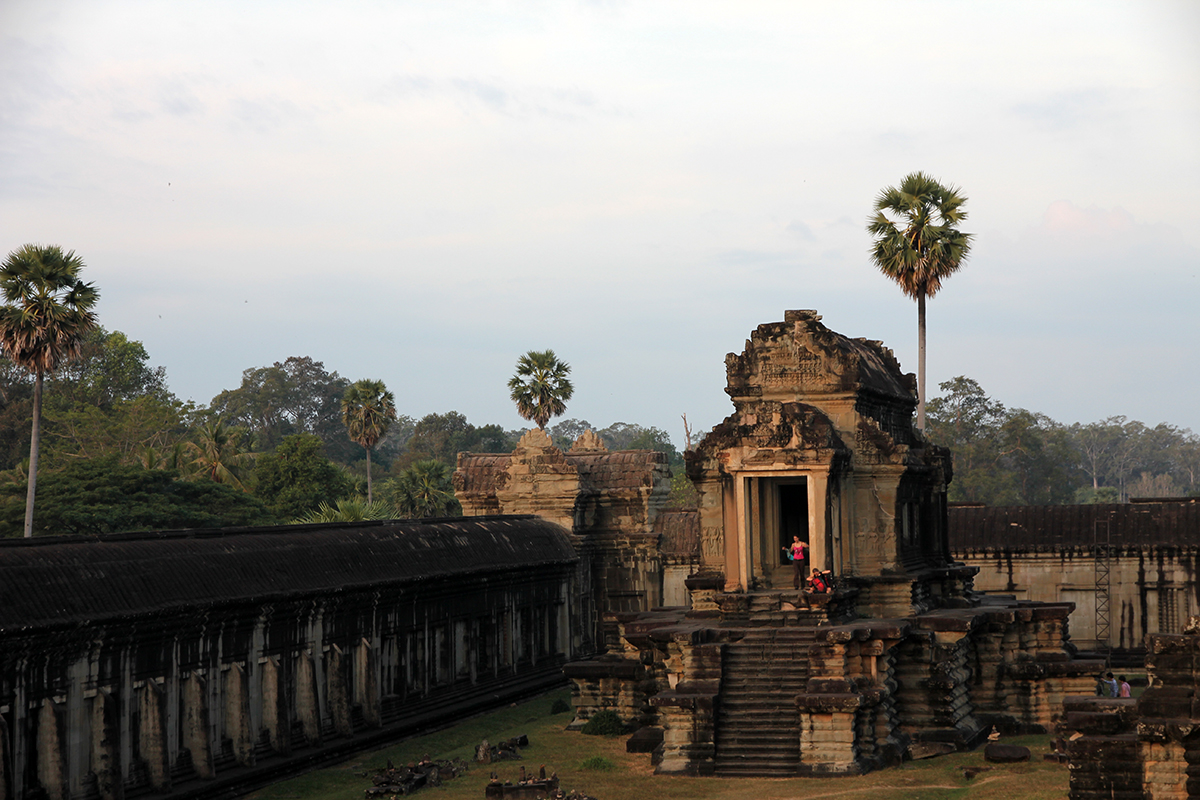
There are some outer-lying temples that can take 30 to 60 minutes to get to. If you’re lucky, you can still be there alone hearing only the buzz of cicadas and the chatter of tropical birds. The outer temples are not as well-restored and are more overgrown by jungle, giving them a more mysterious feel.
If you want to explore the larger area of Angkor Wat, be sure to rent bicycles or hire a tuk-tuk for the day. Ask your driver to take you beyond the standard circuit.
Angkor Wat can also be seen from the air in a hot air balloon, which I haven’t done myself but fellow travellers who did said it was one of their best experiences in Asia. At around $100 it may be expensive on a backpacker budget, but it’s super cheap for a balloon ride compared to what it costs in other countries. If you book this tour, you’ll get not just a balloon ride but also a full day guided visit of the site.
Tip 3: keep at least a full day for Angkor
You can see the most important areas at Angkor in about one day or afternoon. If you really don’t have much time, 1 day will let you get a good impression.
2 days is better as this will allow you to see the more remote temples and learn more about the history of Angkor Wat.
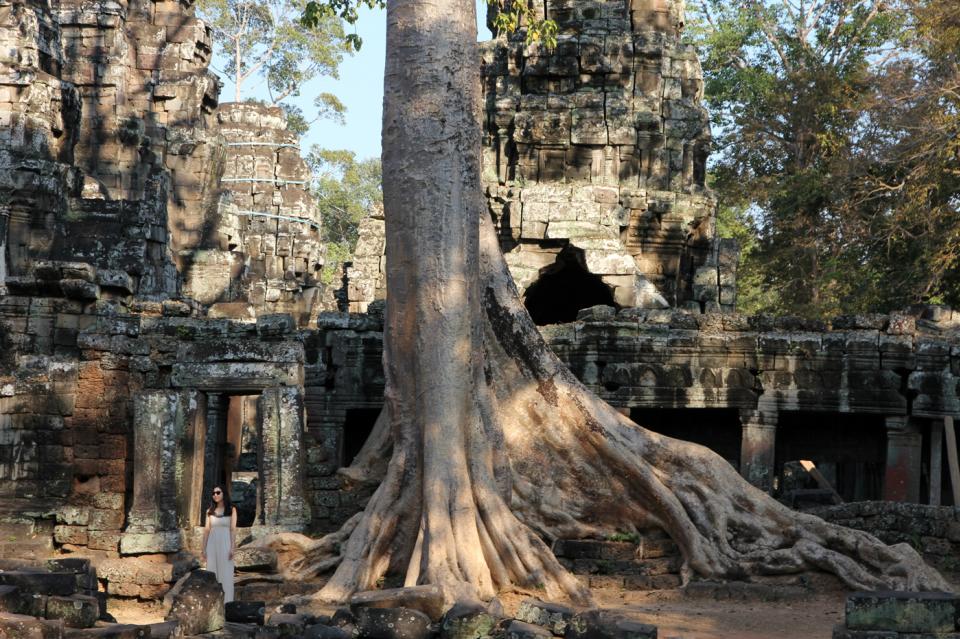
A 1-day pass costs $37 and a 3-day pass is $62. The three days don’t have to be all in a row. Although there is enough to see for 3 days of exploration, most people will probably be a little templed out by day 2, so I think two days is probably the ideal time to spend if you’re not in a rush.
What to do in Siem Reap
Siem Reap is the city nearest to Angkor Wat, which has turned it into pretty much the main tourist spot in the entire country. While not a historical city, I find it a lot more interesting than the capital Phnom Penh, so I would recommend most people to allocate their time here.
Besides serving as a base for temple exploration, you’ll find many other tours and activities in Siem Reap to keep you entertained.
It’s not mainly a cultural destination where you can learn a lot about Cambodia, however it is a place where you can relax (many hotels and hostels in Siem Reap feature a swimming pool) and go on a lot of fun activities and day trips.
Cooking classes, pottery classes, quad bike tours, vespa tours, ziplining, massages, fish pedicures, gondola sunset boat rides… you name it, Siem Reap’s got it! When darkness falls, look no further than Pub Street for cheap booze and entertainment. It’s a whole heap of unpretentious fun.
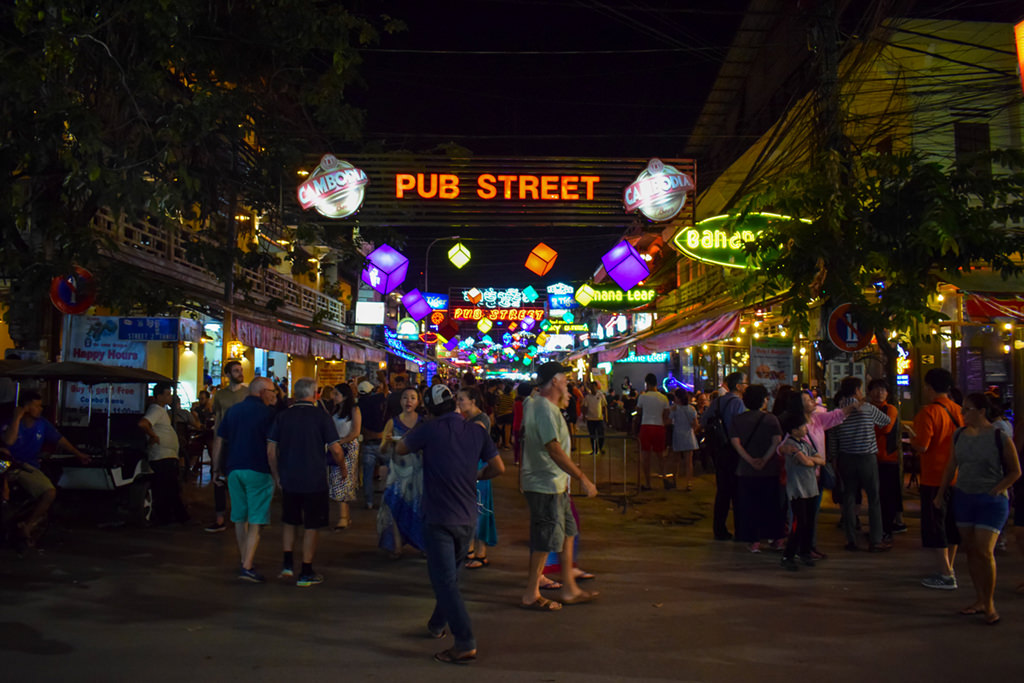
You can see all the activities in Siem Reap here. Be sure to also check our Siem Reap travel guide for some specific suggestions.
Considering how much there is to do in Siem Reap and Angkor Wat, I think it’s worth staying for at least 3 nights if you can.
Tip for visiting Tonle Sap lake
A common day-trip from Siem Reap to do after Angkor Wat is to visit a traditional floating village on Tonle Sap Lake. But if you do this, be warned.
First, compare the reviews of Chong Kneas floating village with those of Kompong Khleang floating village. Clearly, Chong Kneas is an exploitative tourist trap, while the latter actually helps the community and gives you a positive experience.
Make sure you support the right kind of tourism by choosing Kompong Khleang.
What to (potentially) skip in Cambodia
Cambodia is an amazing country to visit, but some places are less worthwhile than others. I just want to be honest in this travel guide to help you spend your time in the best way.
There are three places in particular that show up in seemingly every Cambodia itinerary, but that I’m not sure should be labelled as must-sees.
It’s possible that I just didn’t see in them what other travellers saw, but I’m convinced they are second tier destinations where you don’t need to linger for too long.
Phnom Penh I found simply not as exciting as other capitals in Southeast Asia. Despite desperate attempts to brand it the “Pearl of Asia”, I don’t think it compares favorably to other large cities. The markets aren’t as wild as in Vietnam and the temples and pagodas are no match for Bangkok. Parts of Phnom Penh are still gritty and dusty, elsewhere it’s a cosmopolitan place that’s undergoing a huge construction boom. While I still enjoyed both my visits to Phnom Penh, they ended up not being particularly memorable. (But perhaps you’ll love it — to each their own!)
One reason to still add a quick stop in Phnom Penh is to learn about the horrible history of genocide under the Khmer Rouge regime in the 1970s. This will definitely help you understand this country a lot more and while the subject matter is very dark I’d still consider these somewhat obligatory.
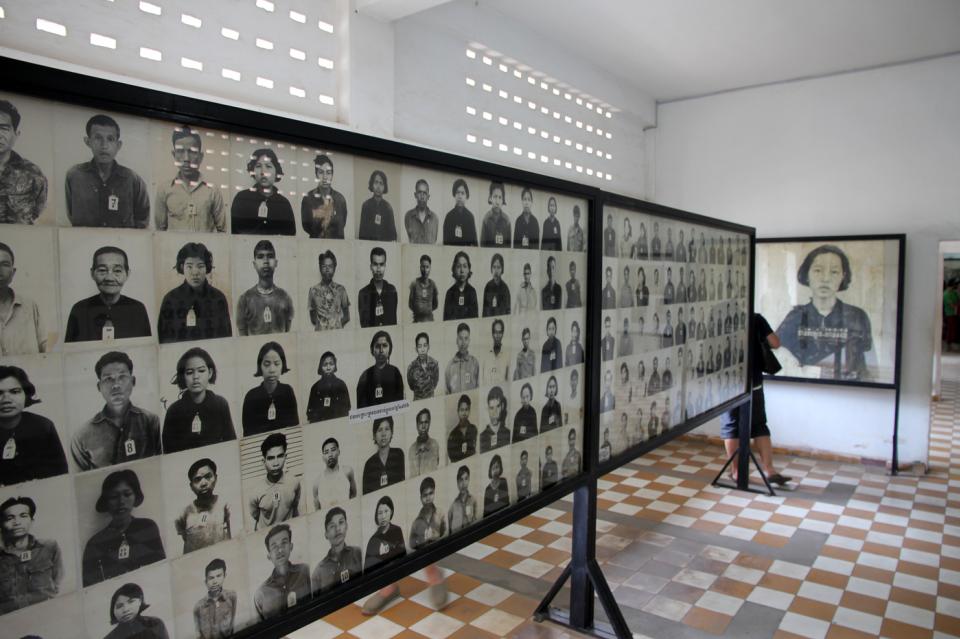
The Tuol Sleng Genocide Museum S-21 is a former school that was turned into a brutal prison during the Pol Pot regime. At the Killing Fields, people were systematically murdered in the most horrific ways. Both museums are quite intense and not exactly family-friendly fare. However, they are hugely eye-opening and educational.
Sihanoukville was once the go-to seaside resort in Cambodia. It’s gone through several waves of development. 10+ years ago it was a big backpacker destination; sure, a bit seedy with some sex tourists, but a fun place to party and hit the beach. Long ago I was there for New Year’s Eve and had a great time.
However, almost all of the hostels disappeared before the pandemic during a boom in Chinese casino construction. This then turned into a huge bust, leaving loads of half-constructed buildings. There used to have some beaches with fun bamboo shack restaurants and bars, but these were almost all bulldozed years ago. What’s left is a city entirely devoid of charm. I recommend using Sihanoukville only as a waypoint to the islands.
Koh Rong is a bit of a question mark. The island is very beautiful and laidback and speckled with hostels, bungalows, and beach shack type of accommodation. However, an international airport is under construction and roads have been carved through the jungle in anticipation of new large-scale resorts. By the time you read this, Koh Rong may still be that perfect lowkey island to go to, or its character could have already changed.
If you decide to stay on Koh Rong I advise choosing a more secluded beach away from the more built-up areas (e.g. the area around the dock where ferries arrive). There have been rumors of many travellers getting sick due to sewage being dumped directly into the ocean, so I would personally reduce the risk by going to a quieter bay or at least swimming in the waters right near the village. As an alternative, consider the nearby less-developed sister island Koh Rong Sanloem. (Sanloem means ‘remote’ in Khmer, even though the islands are right next to each other and are the same distance from Sihanoukville.)
I hope all that doesn’t sound too negative! I sometimes get angry reactions when my blogs are not 100% positive about literally everything. Just remember these are my impressions and I’m sharing them in the hope that you will find it useful.
My 3 favorite experiences in Cambodia
Despite not being a fan of the previously mentioned places, I should also say that some of my favorite travel experiences in all of Southeast Asia were in Cambodia. I usually enjoy lower-key places where you can enjoy nature or get to know the culture.
Let me highlight 3 experiences that I think are highly worth adding to your itinerary, which are all in the very scenic southwest. There is minimal travel time between them, letting you create quite a compact and efficient route.
1. Staying on the laidback islands
Off the Cambodian coast you can find a scattering of small islands. I love staying on them in part because they are much less developed than the very popular ones in Thailand, so you can have a wonderful back-to-basics island escape.
The biggest island, Koh Rong, is beginning to be developed and has a number of small resorts. Around the main pier on Koh Rong are some party-oriented hostels and bars, but the rest of the islands are mostly quiet and peaceful. It will get its own airport, so it’s destined to become a lot more built up, but for now it’s still fairly lowkey.
The other islands are a lot more basic, some of them only having limited power from generators and limited or no internet.
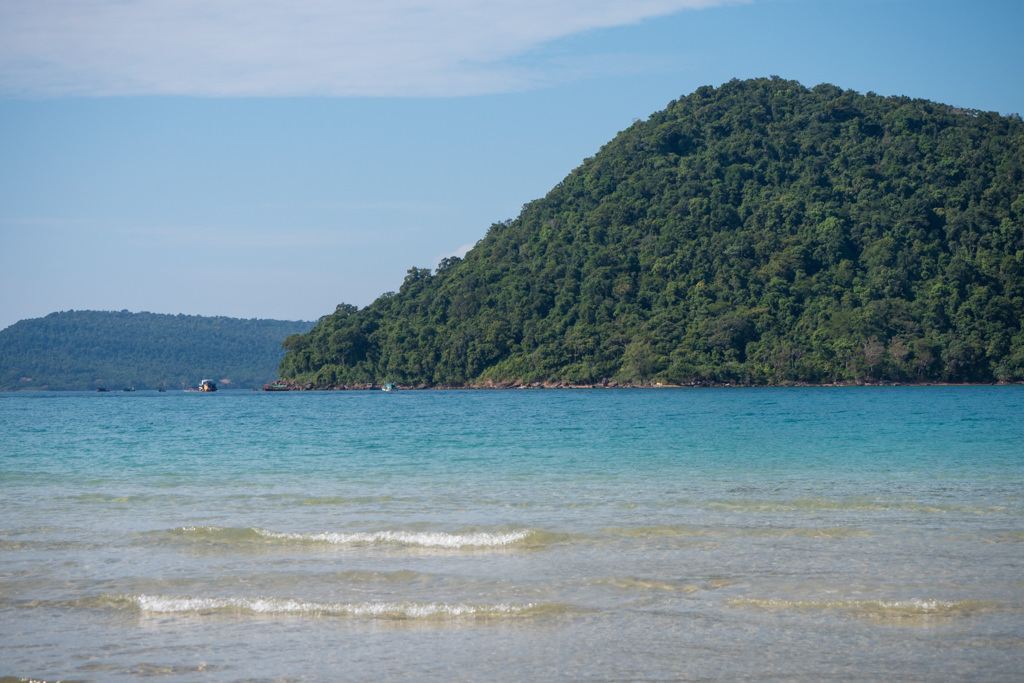
If you’d love to stay in a jungle lodge or a bungalow by the beach, the Cambodian islands are a must-visit. You can definitely get that ‘stranded on an island’ feeling and get away from it all!
The main islands are easily reached by ferry from Sihanoukville. Other smaller islands can be reached from Ream or Poi Yopon.
Keep your eyes on the waves at night; if you’re lucky, you can see bioluminescent plankton sparkling around these shores!
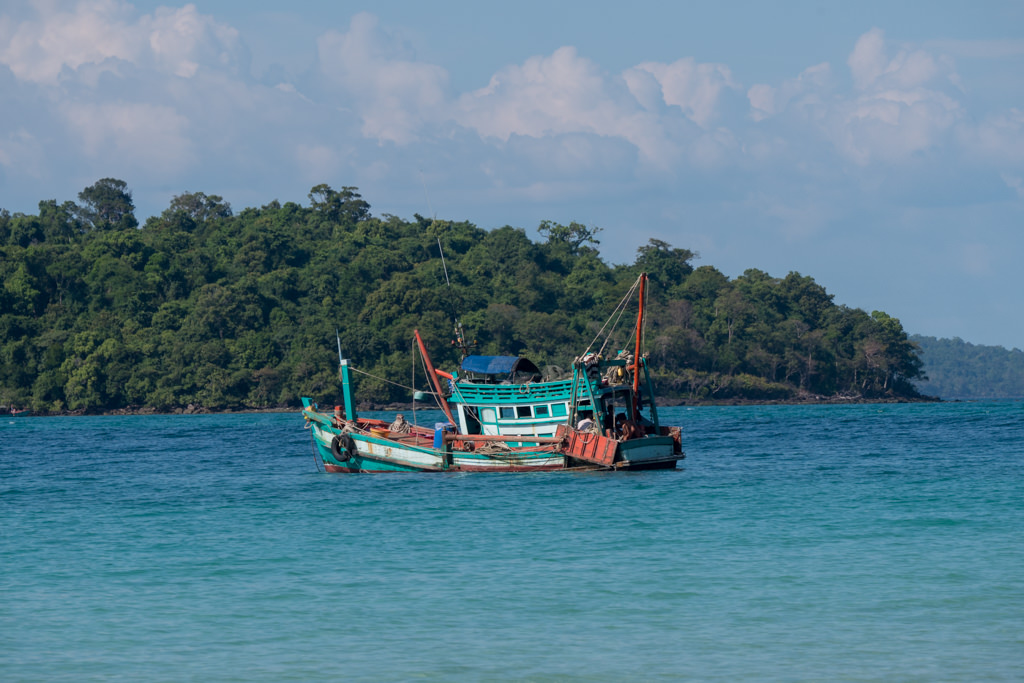

I really liked staying on Koh Rong Sanloem. It’s a bit less developed than the larger Koh Rong but it still has a town where you can shop for things and some small-scale accommodation around several beautiful bays. I spent a week with campfires under starry night skies and swimming during the day. Absolutely blissful.
Barely-developed Koh Ta Kiev can also give you a real castaway feeling, as well as small islands near Botum Sakor National Park, which I’ve marked for a future trip.
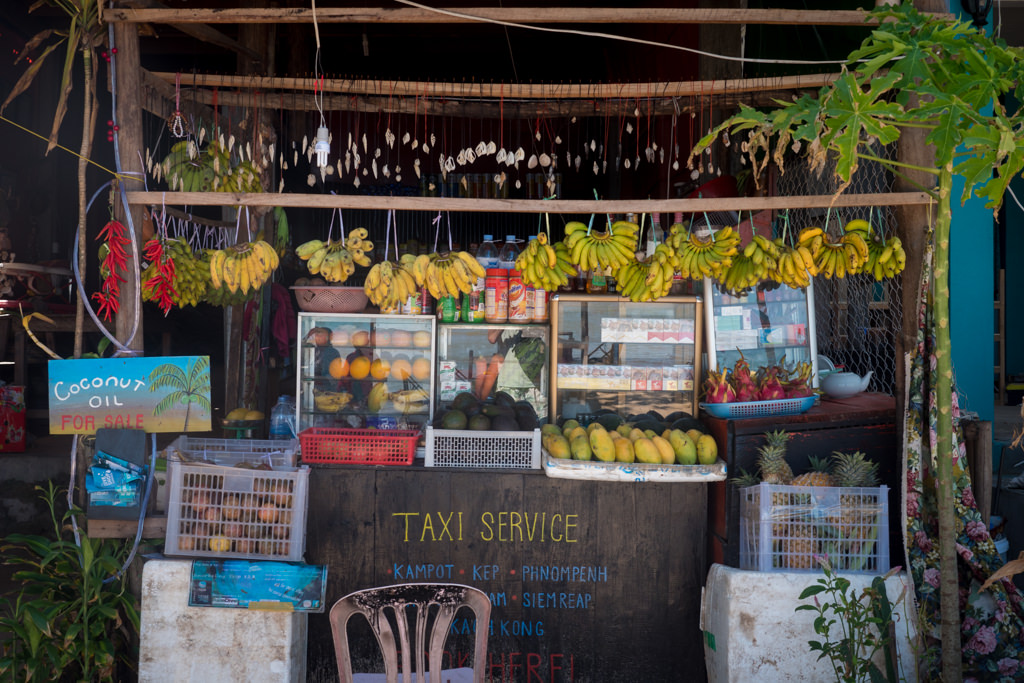
The waters are clear and beautiful, though there generally isn’t as much marine life in the waters as in Thailand or Indonesia. It’s not considered a top location for scuba diving (or snorkeling). However, if you’re just looking to learn, then the many dive shops in Koh Rong and Koh Rong Sanloem can teach you the ropes in about 3 days at very attractive prices.
For beginners the dive sites in Cambodia are actually ideal. You’ll definitely see a few interesting sea creatures, but you can save the truly top tier dive sites for when you have learned your basic diving skills.
2. Ecotourism in the Cardamom Mountains
If you’re looking for impressive landscapes and untouched wilderness, look no further than the southwest part of Cambodia.
This is the most mountainous region that has the most protected nature areas, including one of the last unfragmented rainforests in Asia.
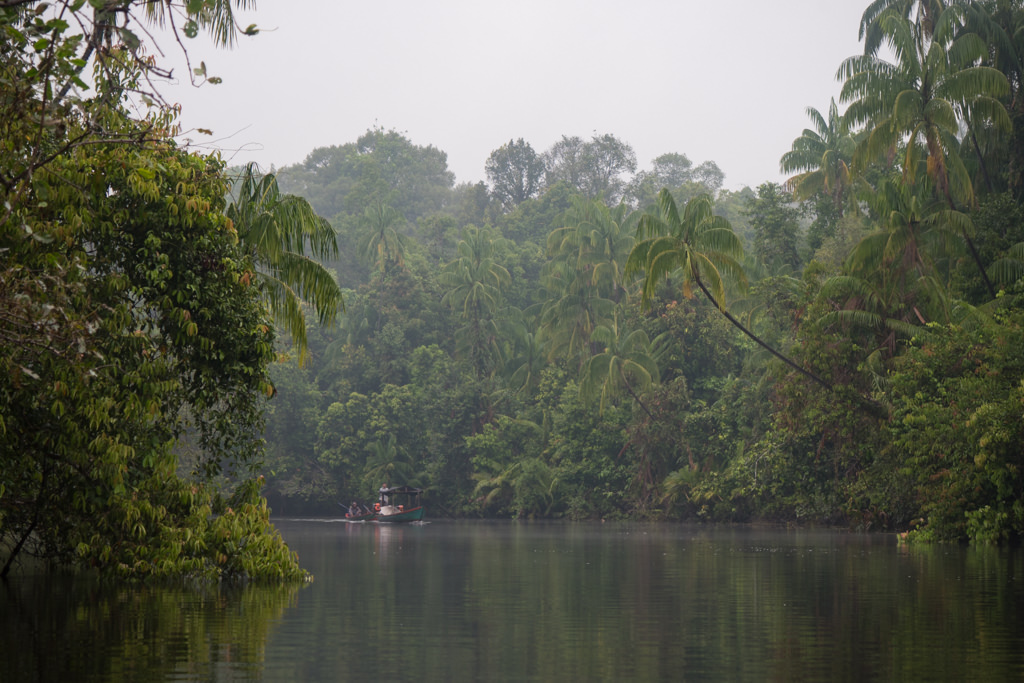
If you want to see lots of tropical birds and other jungle creatures, I can highly recommend going to Chi Pat. Besides the wildlife, this rural area will also give you a wonderful authentic experience — perfect for local homestays or staying in jungle lodges.
Cambodia honestly doesn’t have the best record when it comes to nature conservation (mining and logging sadly get priority most of the time) but these parts are actually protected thanks to local activism — and spending tourism money here will help ensure they stay that way.
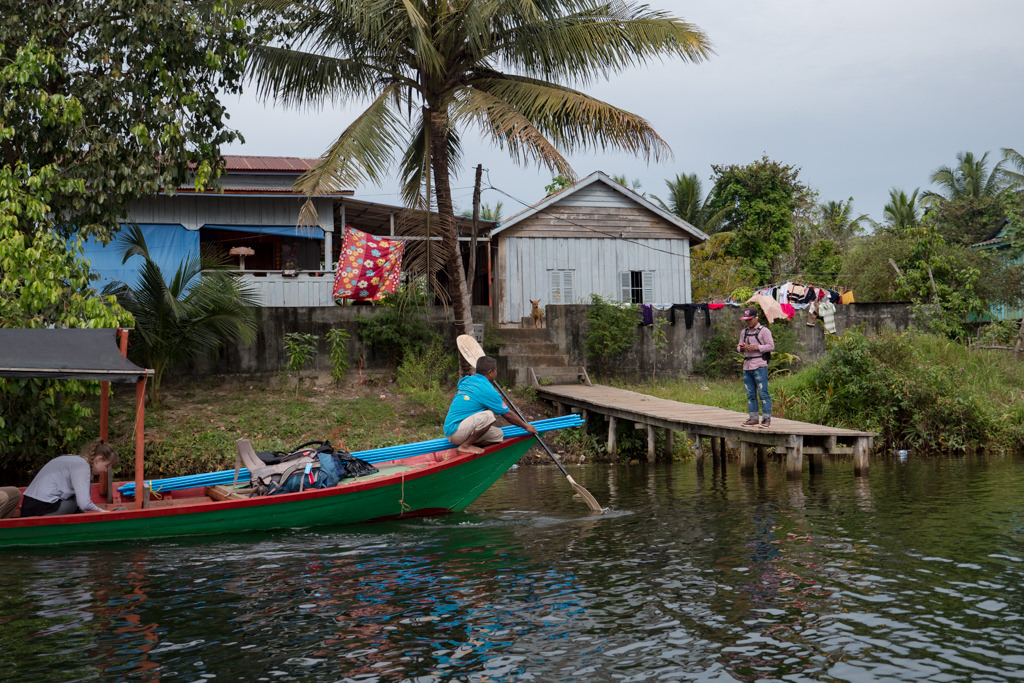
I had a fantastic experience visiting the village of Chi Pat inside the Cardamom Mountains. This village has a CBT (Community-Based Tourism) project, letting you go on various trekking and jungle boat tours, with the tourism funds benefiting the entire local community.
I stayed in the village, went by boat into the jungle, and trekked for 2 days with one night spent at a camp inside the wilderness, waking up in the morning to the distant whooops of gibbons somewhere in the treetops.
The atmosphere in Chi Pat was incredibly welcoming and friendly. It was inspiring to meet the forest rangers who once used to be poachers or loggers but are now proudly protecting the nature. While speaking with some of the guides, rangers, and cooks in this village, it really seemed like this project is making an amazing difference. You can read more about my visit to Chi Pat.
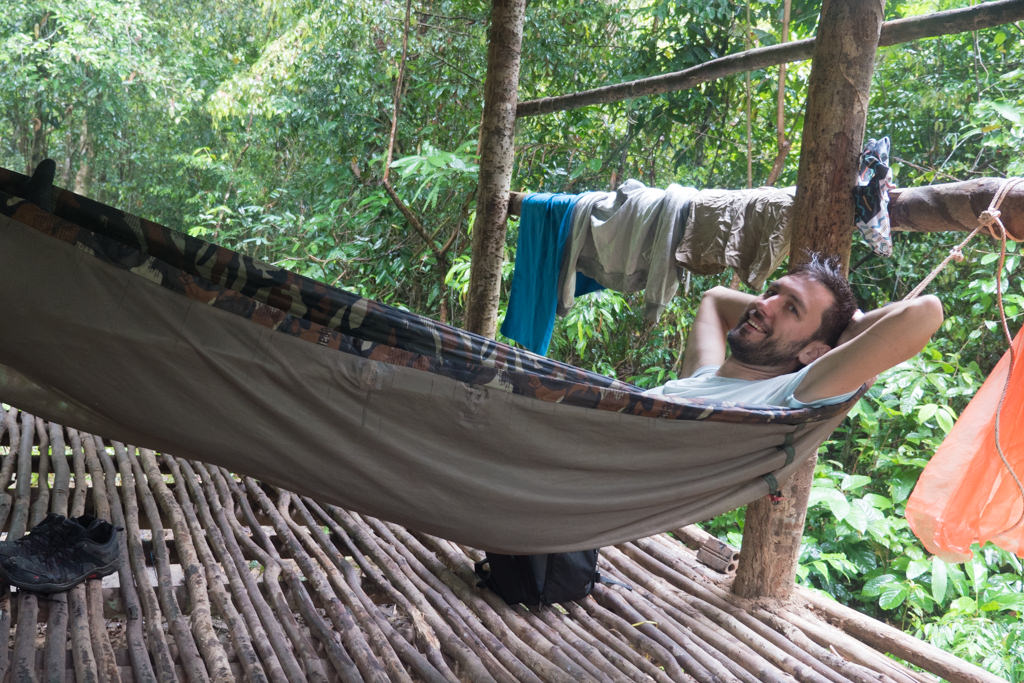
Besides Chi Pat there are other projects such as the Cardamom Tented Camp and the Wild KK Project, among others. There are many options that you can find if you research the Botum Sakor National Park and the Phnum Samkos Wildlife Sanctuary.
If you’re on a backpacker budget you may find that ecotourism tours or jungle stays may cost a bit more than just travelling in the cities, but this does help fund the nature conservation and local development, so it’s designed to be a win-win.
3. Relaxing & local trips in Kampot
Finally, I want to mention the small towns of Kampot and Kep. They’re often mentioned in the same breath, since they are just 20 minutes apart. They’re easily among my favorite places in Cambodia — places where you can unwind, kayak along the river, or rent a scooter and explore caves and other small sights in the area.
Kep is a sleepy seaside mini resort. You can expect some wonderful sea views and a small municipal beach. Better than the beach are the woods behind the town where you can hike around and see some cool abandoned French colonial villas from the 1960s (when Kep was a luxury beach resort).
They usually say Kampot is popular with a younger crowd and Kep is a bit more for travelling families or ‘flashpackers’ — i.e. backpacker-style travellers who stay in nicer accommodation. Prices are a bit higher in Kep than in Kampot.
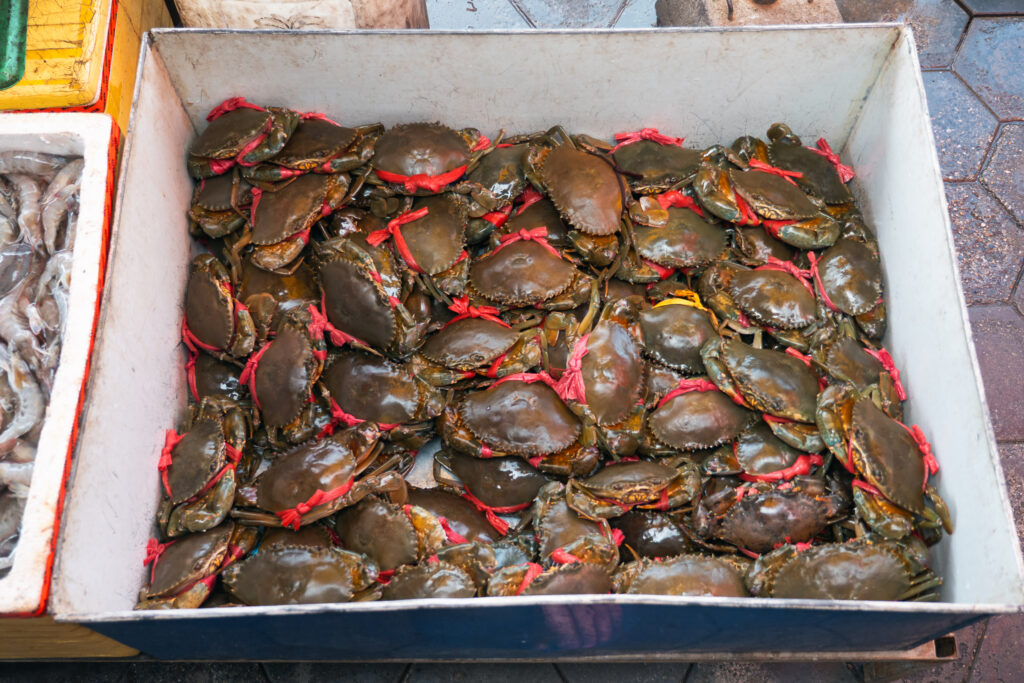

By the way, don’t miss Kep’s famous crab market! It’s abuzz with sellers and filled with stacks of whicker baskets brimming with live crab.
Kampot is a riverside town with a lovely buzzing atmosphere. The downtown area is very lively, though there are also many quiet bungalows along the river.
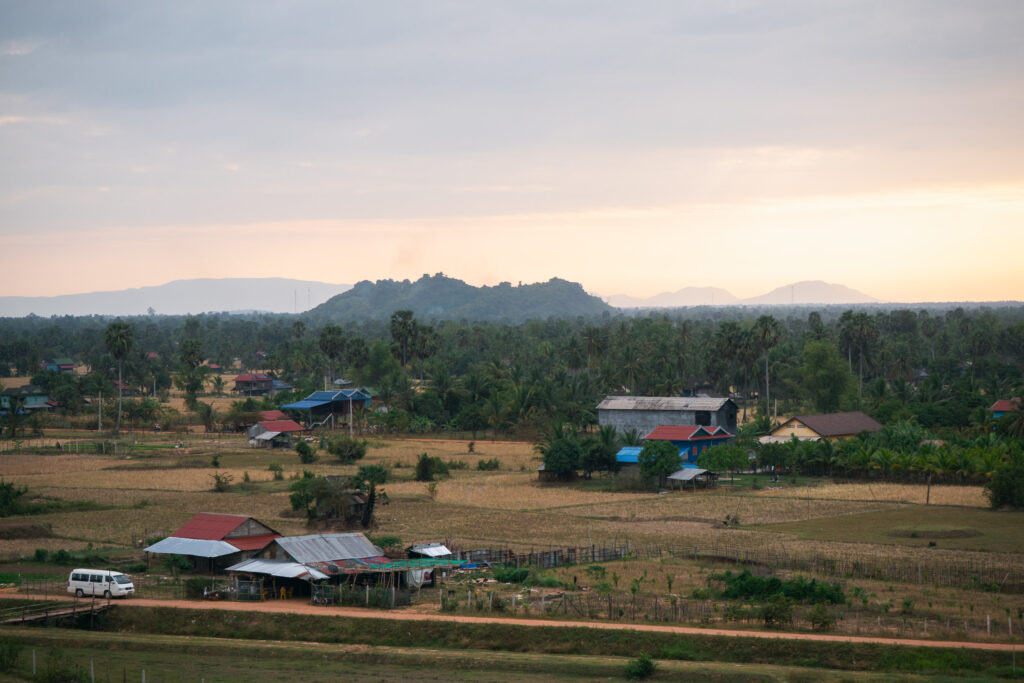
There are numerous things to do around Kampot and Kep. The region is known for its pepper farms and salt fields, and it’s home to many fishing villages, mangrove forests, and caves. The region around Kampot is known to produce some of the best peppercorns, so it’s fun and educational to visit a pepper farm and see how it is produced.
If you are able to ride a scooter (small motorbike) you can have a lovely day out driving via rural roads to the pepper farms, hidden temples, waterfalls, and caves. Alternatively you can pay for a local tour to take you to these places.
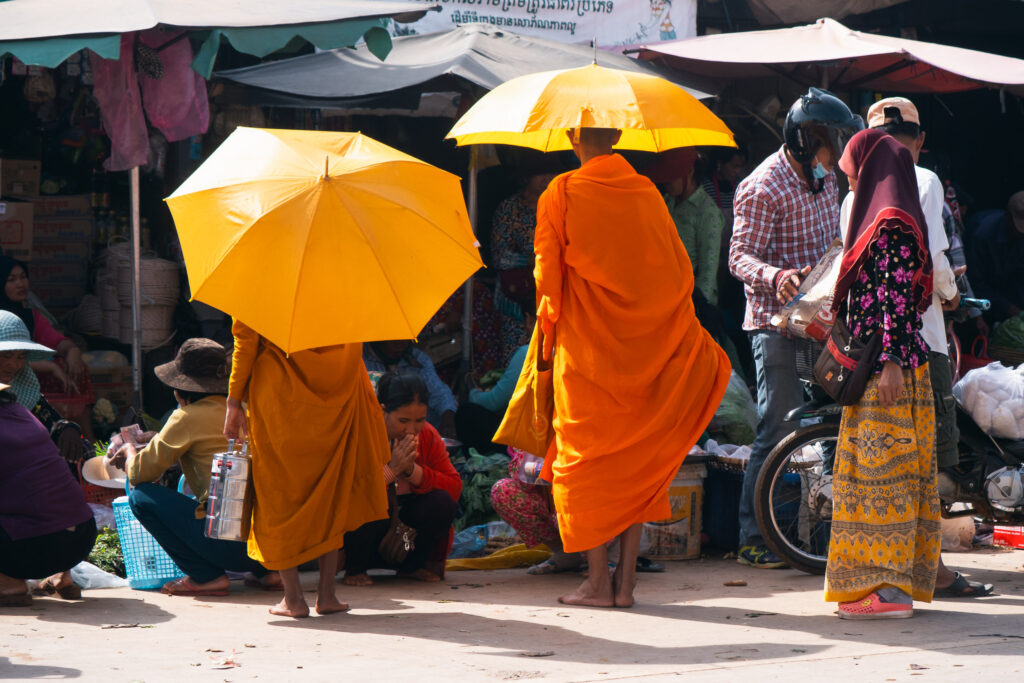
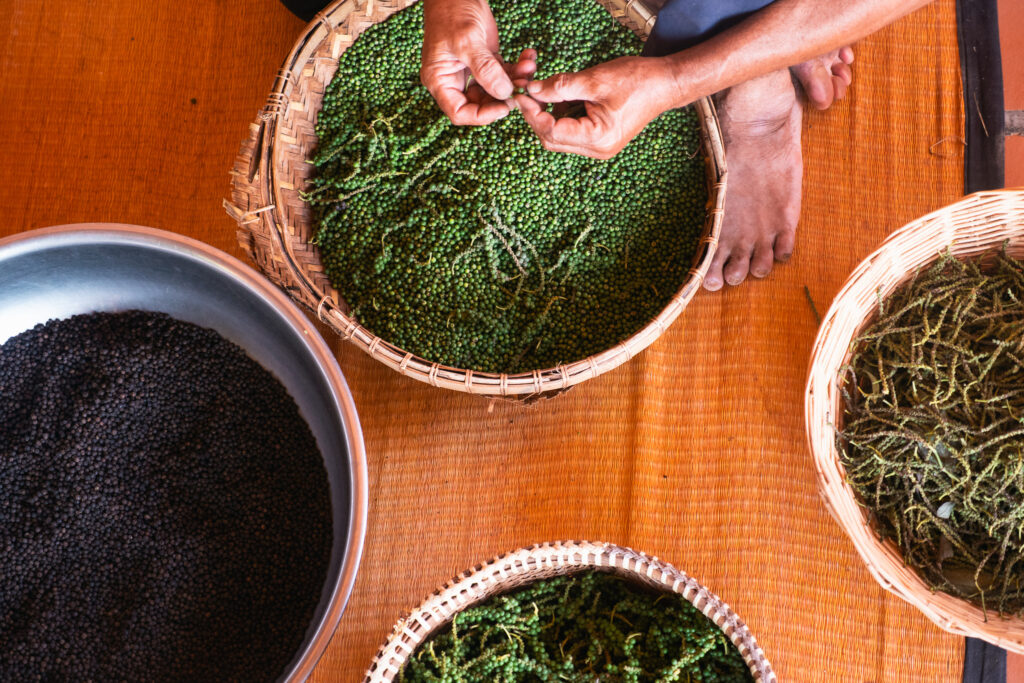
Despite many changes in Cambodia including Chinese money flooding into certain areas, Kampot has kept its essential character and avoids the rough-around-the-edges feel of many other places in Cambodia. It’s a very charming town with lots of interesting scenery nearby, including the Bokor National Park.
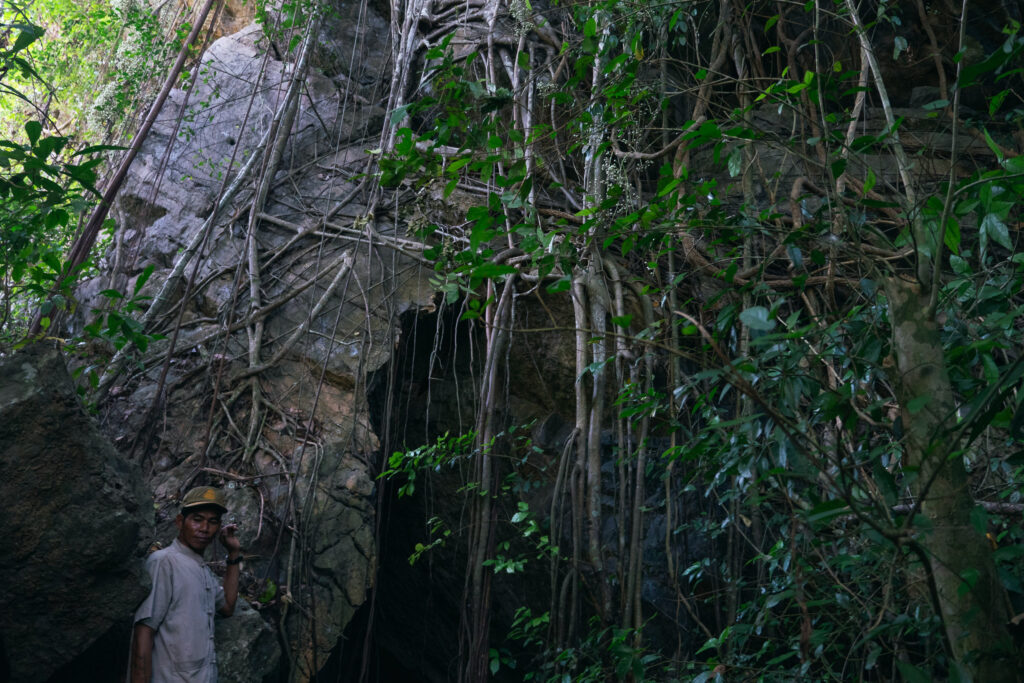
How to get around in Cambodia
Getting from A to B in Cambodia is generally not so difficult, though as in any developing country the road conditions may not be perfect and sometimes there can be delays.
Many coach services operate especially between the cities of Phnom Penh, Siem Reap, and Battambang, letting you travel in relative comfort.
Other destinations are often serviced only by minivans. These minivans will definitely get you where you need to be, though they are often crammed with luggage and passengers.
On some routes, you’ll have to transfer between connecting minivans, which can be a bit annoying. (The 4000 Islands in Laos to Phnom Penh route is notorious for this.) The only solution is to be patient and to take estimated travel times with a pinch of salt. If you’re not a budget traveler then private taxi hire will let you get around this.
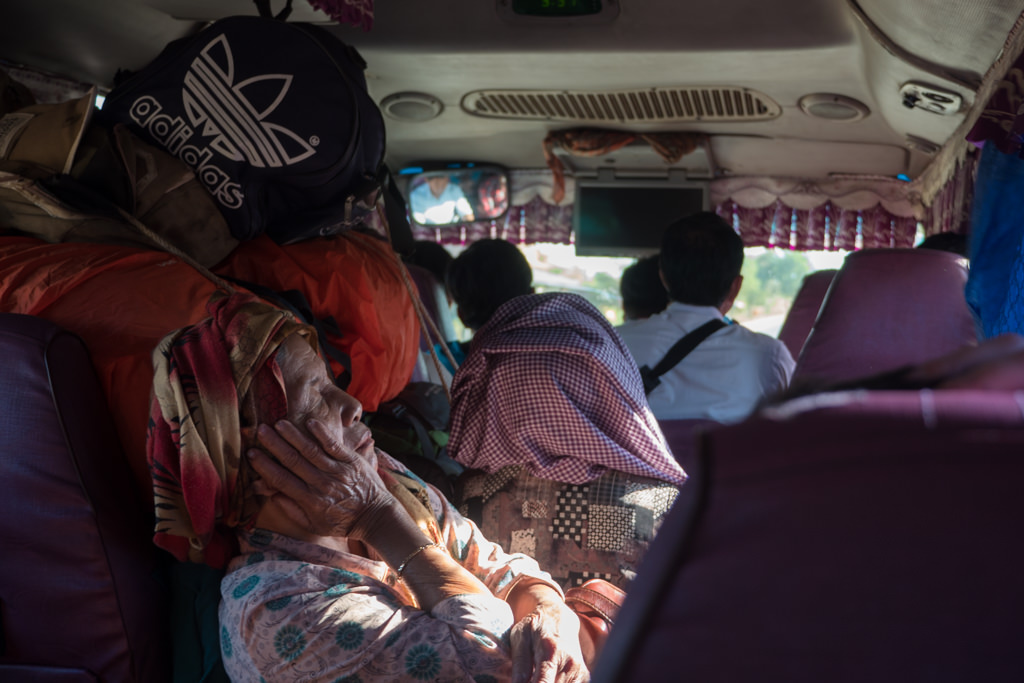
There are a couple of train lines in Cambodia. There are usually known for being very slow, infrequent, and not worth it. But new train lines are being constructed, so this may change in the future.
You can easily buy tickets for buses or minivans through local travel agencies that can be found in any tourist location, or via the reception of your hotel or hostel. The easiest way to book online is through the 12go Asia booking platform.
Going off the beaten track
If you’re in Cambodia for a few weeks, you can go beyond the typical highlights. Consider adding these places to your itinerary:
Kratie
This laidback town by the Mekong River makes for a nice stop especially on your way from Laos or Vietnam.
Its center features some crumbling French colonial buildings with arched verandas and a vibrant market area. Just across the water is the riverine island of Koh Trong, offering a lovely slice of rural Cambodia with cycling trails and floating villages.
Around Kratie you can visit many temples and basket weaver villages. The main attraction though are the rare Irrawaddy dolphins that live in the river about 20 km north. You’ll be sure to get some amazing Mekong Delta sunsets.
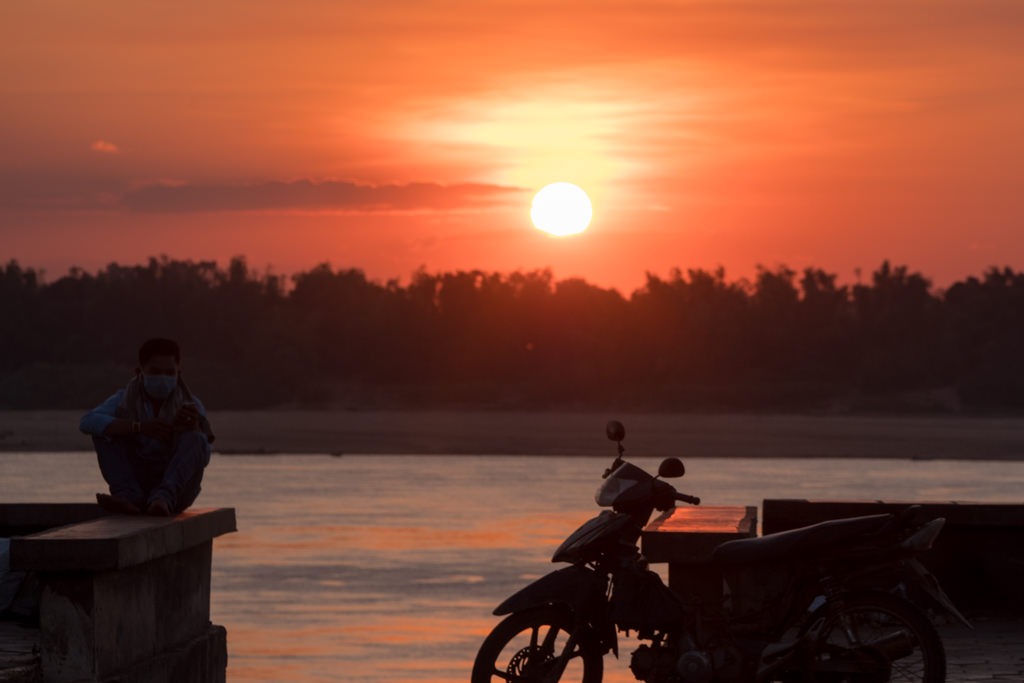
If you’re in Kratie, consider staying at Le Tonle. It’s a restaurant and guesthouse that doubles as a vocational training center for underprivileged Khmer. It has several cozy wood-paneled guestrooms and serves good food. The staff is also totally delightful. (Le Tonle had to close because of the pandemic but plans on reopening in January 2023.)
Cambodian Rural Discovery Tours is another social enterprise in Kratie. It offers dolphin encounters, homestays, trekking, and other experiences. All funds directly support local communities and conservation efforts.
Other Khmer temples
A new road has put several other temples within easy day-trip reach of Siem Reap. It’s about a 2-hour drive to the Beng Mealea temple and the Koh Ker temple, a 30m tall pyramid-like structure rising high above the surrounding jungle.
Even further afield is the Preah Vihear temple. It sits on top of a 525-meter cliff overlooking the border with Thailand.
Battambang
Cambodia’s second-biggest city often gets overlooked in favor of Siem Reap and Phnom Penh. However, it has a more authentic atmosphere; it’s quiet, cheaper, and less commercial. If you’re short on time, you can see Battambang with a tour departing from Siem Reap.
Don’t miss our guide to Battambang for more on this overlooked city.
Mondulkiri
I haven’t yet been but this northwestern province is often touted as a laidback and remote part of Cambodia with a lot of nature and waterfalls. It’s a bit out of the way from other sights, ensuring it will surely remain untouched by large-scale tourism development. This great blog offers tips for visiting this region.

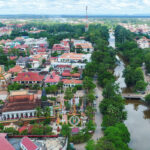
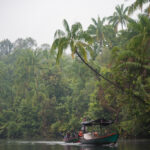
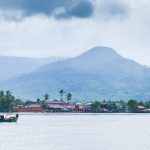
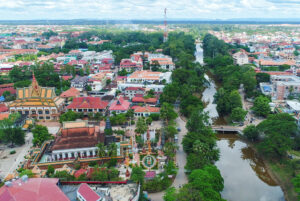
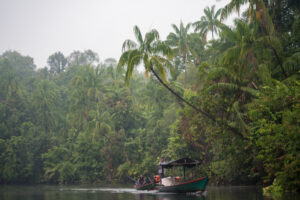
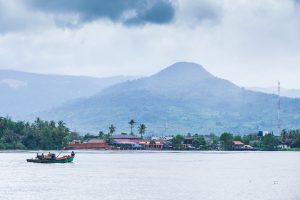
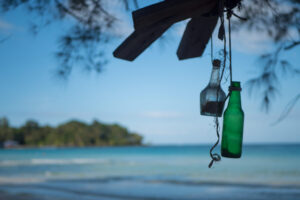
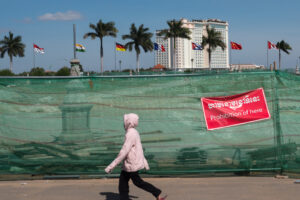

Hi, just wondering about visas for Cambodia. Where do you apply for them and how long do they last? Also, is the UK exempt from visas for Vietnam and Cambodia? Thank you!
Resources like visalist.io are useful to check. On a UK passport you can get 1 month visa on arrival in Cambodia!
I really enjoyed reading your blog post on planning a trip to Cambodia. Your tips were very helpful and I was able to make a great trip that I will never forget. Thank you for sharing your knowledge!
What a great article! We’re currently dreaming of going to Cambodia again – we’ve been
there before and we love, love love it! Here’s to a year with loads of travel plans and new experiences!
– Veronika // RejsRejsRejs
If you want even more tips for your trip to Cambodia, you’re welcome to read
our article on Cambodia
This article is full of great information and super helpful tips! I really feel like I didn’t have nearly enough time in Cambodia!
I definitely agree with if you have the time to go and visit the Genocide museums. It’s a gruelling experience but a must see. Thanks for the article!
Hi Marek,
thanks for all the impressions! 🙂 I am planning a 4 weeks journey in the end of February. I am thinking about Laos & Cambodia. I want to travel from south up north. Can you suggest a trip with some good spots to also fly in and out? How to pass the border between Laos & Cambodia?
Thanks and regards,
Dominik
I would suggest doing north to south, that way you can end your trip on a beach. Fly into Chiang Rai in Thailand or to Luang Prabang, then visit places like Nong Khiaw, Vang Vieng, Vientiane. Go to south of Laos and see the 1000 islands area, then Kratie, Phnom Penh, Angkor Wat, Kampot and chill on Koh Rong. Fly out from Phnom Penh or bus it to bangkok for many flight connections there. Just a suggestion of course 🙂
Thanks for this great article, been very helpful for me who just started planning for a potential 6-day trip today. I suppose it’s not practical to include more than 2 destinations, right?
BTW, on Google Maps apparently the container market is now closed?
Hey Ellyse. Depends what you mean by destinations… with 6 days I think you could definitely still hit up 2 places in Cambodia.
It does seem the container market is closed now. Things change quickly! I’ll update the article. 🙂
Thanks Mark, a very helpful and honest blog! 🙂
Hey, I really enjoyed reading your article. I’ve just driven a motorbike around Cambodia for 30 days. It was a blast. Unfortunately, didn’t have time to visit Sihanouk and Koh Rong because of floods, but that allows me to spend more time in other places. I’ll need to come back since didn’t have time to visit the east part of the country. Battambang was an amazing place, especially driving around the countryside and experiencing bat caves.
Excellent information! I completely agree that Tuol Sleng was a really important site to visit in Cambodia. I had a really hard time with it, but I’m glad I went. After visiting I read “Survival in the Killing Fields”, which is a difficult read but definitely clarifies a lot of what I saw at the museum.
Hi Marek,
Great guide as always, thanks! I’m heading to Cambodia from HCMC on November 2nd. Do you think 10 days is enough to travel Cambodia? Catching a flight to Australia from Bangkok on the 15th November..
As a route I was thinking Phnohm Penh – Kampot / Kep – islands – Siem Reap. Not sure how long to spend in each place or if this is a rational itinerary.
Any thoughts would be great,
Sammi
Hey Sammi. Yeah, Cambodia is not toooo huge so you can see quite a bit of it in 10 days and it’s certainly not an unreasonable amount of time. I’d recommend just a quick stop in Phnom Penh, and then Siem Reap for however long you want to check out Angkor Wat. Kampot/Kep and the islands are the best bits in my subjective view and worth allocating a few more days to 🙂
How do you make your map?
Many people ask that 🙂 I get existing vector maps and then edit them using Figma.
Thank you for this informating! I am finding it very helpful while planning my trip!
Incredibly helpful guide, with places I haven’t even heard of before! Will definately consider going to Chi Pat and Kratie as well during my trip to Cambodia. How did you find the food experienc in Cambodia? I have read mixed things about it 🙂
Glad it’s helpful Niclas! I’m also a bit ambivalent about the Khmer food. I like Thai, Vietnamese and Laos food much more though it’s not like Cambodia is culinary torture either. It’s always a good idea to ask for local tips for restaurants. 🙂
Hello Marek,
I appreciate your article pointing out to support the local people. I see in the comments that many people are wondering if it is a safe place to travel, especially for a single female. I see that you use a service to show places to stay. But I hope that maybe if people ask you for a recommendation, you would come and stay at my hostel so you can make a recommendation to others who ask. You can check my websites and I hope you can visit on your next trip. https://AlisHouseSR.wordpress.com or https://facebook.com/AlisHouseSR
So nice to come across this page as I am currently planning (as soon as vacation is approved) to visit Cambodia later this year. I have always wanted to come and finally see Angkor Wat but no one is interested or they said they’re busy.
Hi Marek,
So nice to come across this page as I am currently planning (as soon as vacation is approved) to visit Cambodia later this year. I have always wanted to come and finally see Angkor Wat but no one is interested or they said they’re busy. My main question is, for a single traveler, is it safe to go there? Anyway, I’m still planning to join tours for convenience. Any tips?
Hey Carmela. Glad it’s useful to you! There are many solo travelers in Cambodia and it’s generally quite safe. I believe Phnom Penh has a bit of a reputation (for bag snatchings mainly) but on the whole it’s not a country to be particularly worried. Plenty of tours available everywhere… they’re easy (and cheap) to book locally.
Hey Marek,
you are talking about some less-visited temples in Angor, 30 to 60 minutes away from the main temples. It would be helpful if you could reveal some of these locations you’re talking about.
Thanks a lot and great blog, super helpful! 🙂
Hey Serge! I’m actually a few days away from totally updating this page. 🙂 There’s many… two examples are Ta Nei or Banteay Srei. Further away are ones like Koh Ker and Beng Mealea. These are actually not part of Angkor Wat but approx 1 hr from Siem Reap.
Thanks a lot for the information.. It will be our first backpacking trip and I’m like the only one organising it cause my boyfriend isn’t a big help haha..even an all in is big trouble for him so thanks a lot.. I’ll need this =)
Glad you’re finding this guide useful!
Hey Marek,
Fruitful info about the place bud. I am planning for a solo trip to Combodia. Would you suggest how safe it is for a solo female travellor and whats the overall budget for a week.
Thanks in advance.
Karthika
Hey Karthika. Cambodia is quite safe with few incidents of crime. Read up on possible scams though, and pay close attention to your belongings as always. Many women travel solo in Cambodia. I usually suggest about $30 a day (backpacker budget).
Hey! I will be going to Cambodia December 2017 as well! I will arrive the 22nd. Where should I begin to explore?
Hey Cristina. That’s so cool! Some of the most popular places are Battambang, Siem Reap (for Angkor Wat), and the islands around Sihanouksville. But on my next visit I’ll be checking out some less-visited ones, like Banlung, Kratie and the Cardamom Mountains…
Hi Marek,
We are also planning to travel these places soon, but we still have doubts about the best way to travel them, do you recommend scooters, bus or maybe some other ways of transportation?
I recommend buses and minivans for moving between the major places, and scooters for local sightseeing. Central Cambodia is a bit dull for a road trip (a lot of straight roads and flat land) so I think it’s nicer to bus it there.
Big help. Planning to visit Phnom Penh next year. This one is helpful. Thank you 🙂
Great article, thanks for the tips! With the stunning temples of Angkor, moving historical sites like the Killing Fields, delicious food, colorful markets, and the mighty Tonle Sap, Cambodia is a joy to visit. However, there are numerous tourist targeted scams to be wary of http://travelscams.org/asia/common-tourist-scams-cambodia/
Do be wary of the visa scam, coin collectors, scam orphanages, Angkor Watt touts, incense/prayer scam, Tonle Sap floating village rice scam, milk/food beggar, pickpocketing, snatch theft, invitations to a local home for gambling, tuk tuk scam, rape accusation, fake police and many more!
A great intro to Cambodia! Thanks for sharing your knowledge and your wonderful photos.
Thanks man, this is a big help.
Btw. the “Tomb Raider Temple” is actually called Angkor Thom!
You’re Welcome!
do you know what’s the name of the shooting range at phnom penh nearby killing fields? can’t seem to find anything online.
Try searching for ‘Phnom Pehn Shooting Range’. Here it is on TripAdvisor.
To what extent is it realistic to backpack Thailand and Cambodia in 2 weeks?
I’d probably pick one area in Thailand (e.g. south or north, not both) to keep a compact route. It takes about 1 travel day to get from Bangkok to Siem Reap, and they do combine pretty well.
Thanks for your amazing blog! Helps me lots by planning my trip 🙂
Btw Marek, about the stacks of counterfeit money. It’s not exactly counterfeit money. You don’t buy those things. It’s for the death. People bought it and burn for the deaths.
Didn’t realise it was for funerals. Interesting! 🙂
Hey, I love your website. It’s SO helpful. One question: Is it necessary (or a good idea) to book hostels in advance for travelling in Cambodia (Phnom Penh, Sihanoukville, and Koh Rong) in June? I’ve heard of them having reduced prices for certain months, so I was wondering if there is a best time to book. Thanks a lot.
Sites like Hostelworld or Booking.com will show you the price based on your selected dates, so any seasonal price reductions should already be reflected here (i.e. there’s no advantage in waiting to book later). There’s almost always some accommodation available so you can definitely wing it, and without a booking you can sometimes negotiate over the price. But if you want to be assured of a bed in your preferred place (e.g. a hostel or guesthouse with a high rating) it definitely helps to book ahead. Good luck! 🙂
Definitely some quality tips here. Thank you for the suggestions and the easy-to-read style !
Great guide, thank you. Planning to travel to Cambodia for a few months in May.